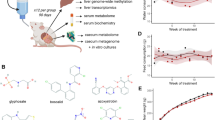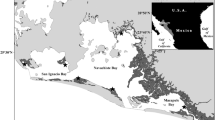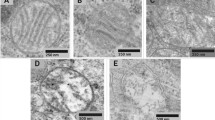Abstract
THERE is increasing concern about the possible harmful effects resulting from accumulation of organochlorine pesticides in soil, water and in the food of animals and man. DDT, the first organochlorine pesticide (introduced in 1941), has been supplemented by the cyclodiene group, which includes aldrin, dieldrin and endrin *. These compounds, like DDT, accumulate in fat and are only excreted slowly. Their toxic effects are also similar, large doses causing convulsions and hepatic damage. The blood concentrations currently found in the general population of Europe are unlikely to be directly toxic, although present levels of environmental exposure have been claimed to be harmful to fish1 and predatory birds2. Doses of these pesticides below those at which direct toxic effects are observed have, however, been shown to induce hepatic microsomal enzymes in animals3, and in the rat this occurs with as little as 10 p.p.m. of DDT in the body fat4. Whether current levels of environmental exposure to organochlorine pesticides are sufficient to produce enzyme induction in man is uncertain: Kolmodin et al.5 found a decrease in the half life of injected antipyrine in the plasma of men manufacturing pesticides, and Poland et al.6 reported changes in cortisol and phenylbutazone metabolism in factory workers with heavy exposure to DDT. In studies of workers engaged in the manufacture of pesticides, hepatic microsomal enzyme activity was assessed from changes in the urinary excretion of D-glucaric acid (an end product of the glucuronic acid pathway of the liver7) and related to blood pesticide levels.
This is a preview of subscription content, access via your institution
Access options
Subscribe to this journal
Receive 51 print issues and online access
$199.00 per year
only $3.90 per issue
Buy this article
- Purchase on SpringerLink
- Instant access to full article PDF
Prices may be subject to local taxes which are calculated during checkout
Similar content being viewed by others
References
Johnson, D. W., Trans. Amer. Fish. Soc., 97, 398 (1968).
Ratcliffe, D. A., J. Appl. Ecol., 7, 67 (1970).
Hart, L. G., and Fouts, J. R., Proc. Soc. Exp. Biol. Med., 114, 388 (1963).
Gerboth, G., and Schwabe, U., Arch. Exp. Pathol. Pharmak., 246, 469 (1963–4).
Kolmodin, B., Azarnoff, D. L., and Sjoqvist, F., Clin. Pharm. Therap., 10, 638 (1969).
Poland, A., Smith, D., Kuntzman, R., Jacobson, M., and Conney, A. H., Clin. Pharm. Therap., 11, 724 (1970).
Hunter, J., Maxwell, J. D., Carrella, M., Stewart, D. A., and Williams, R., Lancet, i, 572 (1971).
Marsh, C. A., Biochem. J., 86, 77 (1963).
Hunter, J., Maxwell, J. D., Stewart, D. A., Parsons, V., and Williams, R., Brit. Med. J., 4, 202 (1971).
Richardson, A., Robinson, J., Bush, B., and Davies, J. M., Arch. Env. Health, 14, 703 (1967).
Hunter, J., Maxwell, J. D., and Williams, R., Lancet, ii, 47 (1971).
Robinson, J., and Roberts, M., Fd. Cosmet. Toxicol., 7, 501 (1969).
McGill, A. E. J., Robinson, J., and Stein, M., Nature, 221, 761 (1969).
Duggan, R. E., Barry, H. C., and Johnson, L. Y., Science, 151, 101 (1966).
Coble, Y., Hildebrandt, P., Davis, J., Raasch, F., and Curley, A., J. Amer. Med. Assoc. 202, 489 (1967).
Robinson, J., Canad. Med. Ass. J., 100, 180 (1969).
Davies, J. E., Edmundson, W. F., Carter, C. H., and Barquet, A., Lancet, ii, 7 (1969).
Jager, K. W., Aldrin, Dieldrin, Endrin and Telodrin: an Epidemiological and Toxicological Study of Long Term Occupational Exposure (Elsevier, Amsterdam, 1970).
Werk, E. E., MacGee, J., and Sholiton, L. J., J. Clin. Invest., 43, 1824 (1964).
Author information
Authors and Affiliations
Rights and permissions
About this article
Cite this article
HUNTER, J., MAXWELL, J., STEWART, D. et al. Increased Hepatic Microsomal Enzyme Activity from Occupational Exposure to Certain Organochlorine Pesticides. Nature 237, 399–401 (1972). https://doi.org/10.1038/237399a0
Received:
Revised:
Issue Date:
DOI: https://doi.org/10.1038/237399a0
This article is cited by
-
Noninvasive assessment of microsomal enzyme activity in occupational medicine:
International Archives of Occupational and Environmental Health (1984)
-
Single-void urine selenium level expressed in terms of creatinine content as an effective and convenient indicator of human selenium status
Bulletin of Environmental Contamination and Toxicology (1982)
-
Evaluation of the expression of urinary selenium level as ng Se/mg creatinine and the use of single-void urine as a sample for urinary selenium determination
Bulletin of Environmental Contamination and Toxicology (1981)
-
Cytochrome P-450 content and NADPH-cytochromec reductase activity in rats treated with carbaryl and propoxur
Bulletin of Environmental Contamination and Toxicology (1979)
-
An evaluation of urinaryd-glucaric acid excretion during acute hepatitis in man
The American Journal of Digestive Diseases (1978)
Comments
By submitting a comment you agree to abide by our Terms and Community Guidelines. If you find something abusive or that does not comply with our terms or guidelines please flag it as inappropriate.



